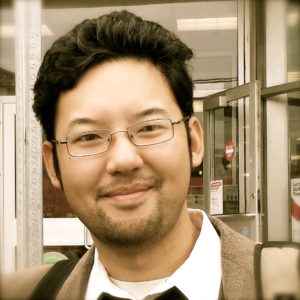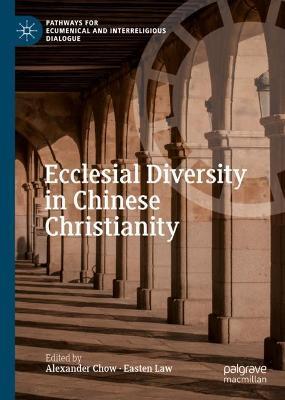Ecclesial Diversity in Chinese Christianity (Pathways for Ecumenical and Interreligious Dialogue) edited by Alexander Chow and Easten Law. Published by Palgrave Macmillan, 2021, 239 pages. ISBN-10: 3030730689, ISBN-13: 978-3030730680. Hardcover and Kindle versions available on Amazon.
When Alexander Chow (University of Edinburgh) and I began assembling and editing the diffuse essays that make up the recently published volume, Ecclesial Diversity in Chinese Christianity, we were not expecting any significant shifts in our scholarly outlook. This was to be a simple book that provided snapshots of Chinese Christian life around the world with a nod to the historical and migratory links that connected them.
As we worked, however, the sum of the volume’s parts turned out to weigh much more heavily on our minds than we expected. We considered the historical contingencies that shaped Protestant and Roman Catholic conceptions of God in China; wondered at the ways Chinese Christians reshaped their faith overseas in places like Malaysia, the United Kingdom, and Canada; and revisited the ways Chinese Christians in the mainland shifted their religiosities in response to political priorities and urbanization.
Beholding this small yet diverse sample of Chinese ecclesial life was messy and disarming. We realized some of the pre-existing categories that have long shaped the popular framing of “Chinese Christianity” were fraying. The finished product seemed to implicitly beckon us to reconsider a basic question: What does the Chinese church look like in a globalized world?
Global trends are disrupting stereotyped notions of the Chinese church, both in the PRC and around the world. It is no longer tenable to speak of Chinese Christianity as something centered in the People’s Republic of China. Gone are the days when the Chinese church could be easily classified in two or three categories (Three-Self and house churches, for example).
The warp speed social changes that have taken place in China during recent decades have blurred our images of Chinese Christian identity. Migration and technology have added new layers and nodes in a global network of Chinese ecclesial life. Like the academic field of world Christianity itself, the study of Chinese Christianity is now dealing with a multi-polar reality. ChinaSource has admirably tracked some of these changes by convening diverse voices from those who work with and are from the Chinese church.
As the global presence of the People’s Republic of China grows, attention to the various ways diasporic Chinese and/or Sinophone communities around the world respond is also increasing, including Chinese Christians. For example, political conflicts in Hong Kong have challenged many Hong Kong congregations’ priorities. Across the Pacific, the re-kindling of anti-Asian hate in the United States in response to the COVID-19 pandemic has pushed many Chinese American churches to reconsider the role their faith ought to play in national belonging.
Again, ChinaSource has been keen to keep up with these shifts. The blog posts featured here are increasingly diverse in their framing of “Chinese Christianity,” including attention given to the history of China’s Hui community and the unique challenges and opportunities facing Hong Kong Christians. A recent ChinaSource Quarterly issue highlights the history of the Chinese American church with future issues in the pipeline scheduled to explore other parts of the Chinese diaspora.
In sum, after Chow and I completed our edited volume, I realized the state of scholarship on Chinese Christianity has hit a most-welcome tipping point; one where the abundance of historical narratives, sociological portraits, and theological reflections on the Chinese church around the world have become too big for a single story. Moreover, I believe this realization parallels many of the developments happening right here at ChinaSource; one that brings about a new vision for partnering with Chinese churches in diverse contexts and situations.
Chinese Christianity has always been incredibly diverse, but today we are realizing this in new ways that demand those serving and studying Chinese ecclesial life be prepared to engage new levels of complexity that span multiple boundaries. While such complexity might be intimidating to some, I welcome it. It is a healthy sign that God is bigger than any one expression of the Chinese church.

Easten Law
Easten Law is the Assistant Director for Academic Programs at the Overseas Ministries Study Center at Princeton Theological Seminary (OMSC@PTS). His research focuses on lived theology, public life, and religious pluralism in contemporary China. He completed his PhD at Georgetown University, an MDiv at Wesley Theological Seminary, and an MA …View Full Bio
Are you enjoying a cup of good coffee or fragrant tea while reading the latest ChinaSource post? Consider donating the cost of that “cuppa” to support our content so we can continue to serve you with the latest on Christianity in China.
